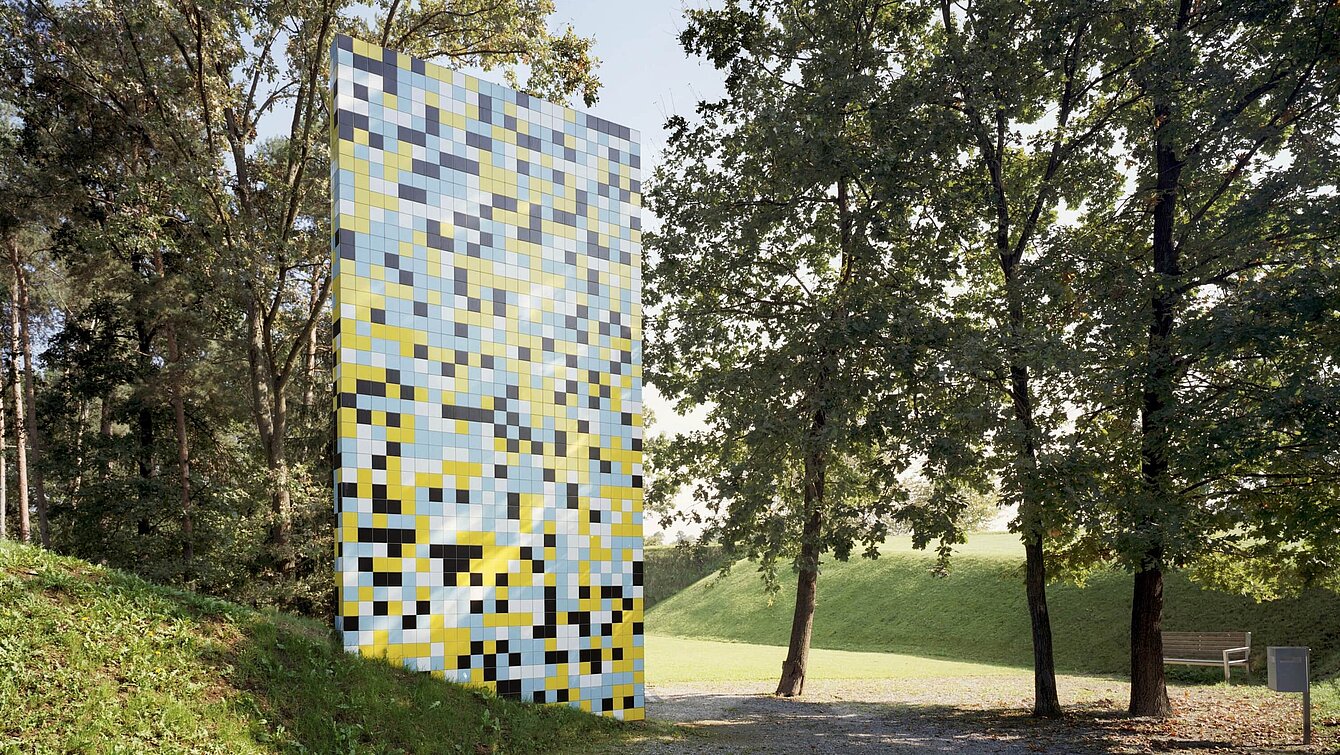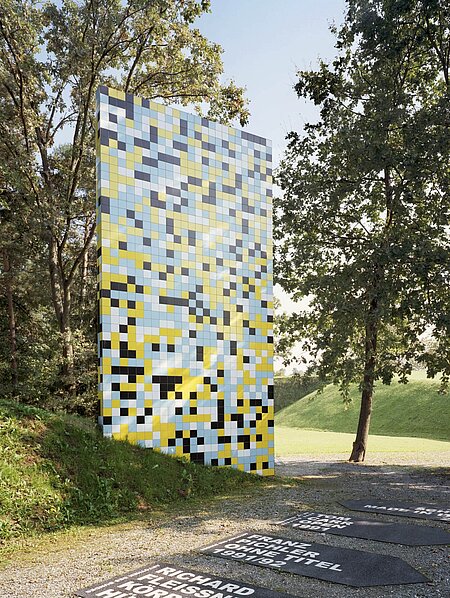Seven metres high and four metres wide, this sculpture rises out of an artificial hill and seems to form a similar connection with both the park and the surrounding trees. The scientific starting point for Schlick’s work is the completion of the Human Genome Project in 2001, in which the 3.2 billion base pairs that make up human DNA were sequenced. Schlick replaces the four building blocks of the genome with cheaply produced tiles made in Italy, using four different colours. As a result of the random and yet systematic arrangement of these four colours, the code manifests itself as a section of the world, of life, of nature.
Made in Italy
Jörg Schlick, 2003


Image Credits
Author
Elisabeth Fiedler
Location on map
Position 44
Owner
Österreichischer Skulpturenpark Privatstiftung
Artist biography
Jörg Schlick
Show all
About the sculpture
As a multi-artist, Schlick scrutinised the intersections between aesthetics, scientific problems and those intrinsic to Art, as well as market-related and socio-political questions.
The sculpture “Made in Italy” has not simply been deposited in the park, but rather it has been dug into an artificial elevation, and stands as a seven-metre tall and almost four-metre wide wall. Thus, life’s artificial changeability and the potential influence on it, become evident in this piece of art adjacent to “naturally” growing trees.
Scientifically it is based on the conclusion of the human genome project in 2001, in which 3.2 billion base pairs forming the human DNA were mapped. Schlick replaces the four elements of the genetic material – the bases adenine, thymine, cytosine and guanine – with low-cost tiles in four different colours, imported from the interior-design-Mecca, Italy.
Seemingly subject to random generation, yet following a certain system; a section of the world, of life, of nature is manifested in this work. The principle of the overflow intrinsic to chaos, the eruptive discharge that knows no bounds is meticulously tamed and transferred to an aesthetical field of vision. Schlick destroys our ideas of a whole referring to fragments, hybrids and breaks. The importance of the individual work is subjected to the creation of a pattern, a rhythm, and some stringent dynamics.
The deconstruction of the image into single pixels, which began with new knowledge about light in the 19th century making it readable only from a certain distance, is now continued. Information gained from experience and scientific pervasion of material creates splinters, which despite continuously enlarged knowledge, do not allow for readability, no matter from which distance.


















